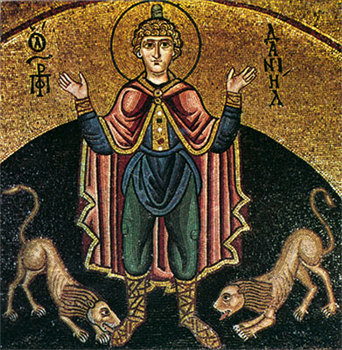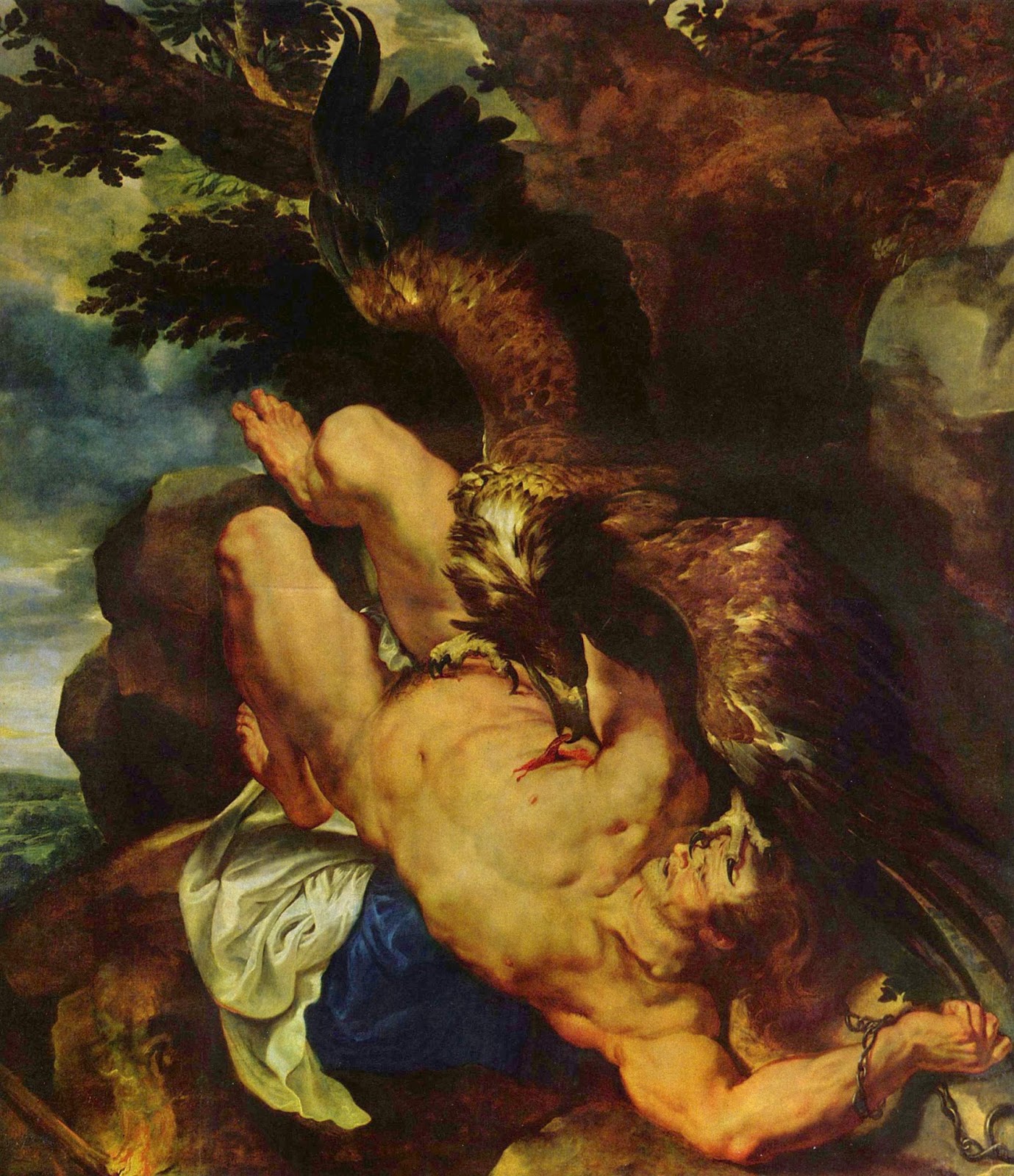
Prophet Daniel in Lion’s Den (10th century mosaic) shows the lions tame at Daniel’s feet, as sheep devoted to their shepherd.
The Prophet Daniel is best known for his imprisonment in the lions’ den. A young Jewish man living in exile, he is raised to high office by his royal master Darius the Mede. Daniel’s jealous rivals trick Darius into issuing a decree that for thirty days no prayers should be addressed to any god or man but Darius himself; any who break this are to be thrown to the lions. Daniel continues to pray to the God of Israel, and the king, although deeply distressed, must condemn Daniel to death, for the edicts of the Medes and Persians cannot be altered. Hoping for Daniel’s deliverance but unable to disobey his own law, Darius has Daniel cast into the pit. At daybreak the king hurries to the place and cries out anxiously, asking if God had saved his friend. Daniel replies that his God had sent an angel to close the jaws of the lions; Christian liturgical hymnography describes the prophet as having become a shepherd to the lions who behaved like sheep. The king commands that those who had conspired against Daniel should be thrown to the lions in his place, along with their wives and children, and writes to all the people of the whole world commanding that all should tremble and fear before the God of Daniel.
In the oldest version of the book of the prophet Daniel, there is the additional detail that the prophet Habbakuk–many miles away, carrying food in a basket–was picked up by his hair by an angel and brought to the lions’ den to share his food with Daniel. (Habbakuk is often identified as having bright orange or red hair.)
Daniel is also associated with Christmas because of his prophecy regarding the stone which smashed the idol (Daniel 2:34–35) which is taken as a metaphor for the Incarnation: the “stone cut out” being symbolic of the Logos (Christ), and the fact that it was cut “without hands” being symbolic of the virgin birth. Byzantine Christian hymns and poetry refer to the Mother of God (the Virgin Mary) as the “uncut mountain.”
A contemporary icon showing the prophet Daniel in the lions’ den; Habbakuk is shown above, bringing a meal to share with Daniel.

